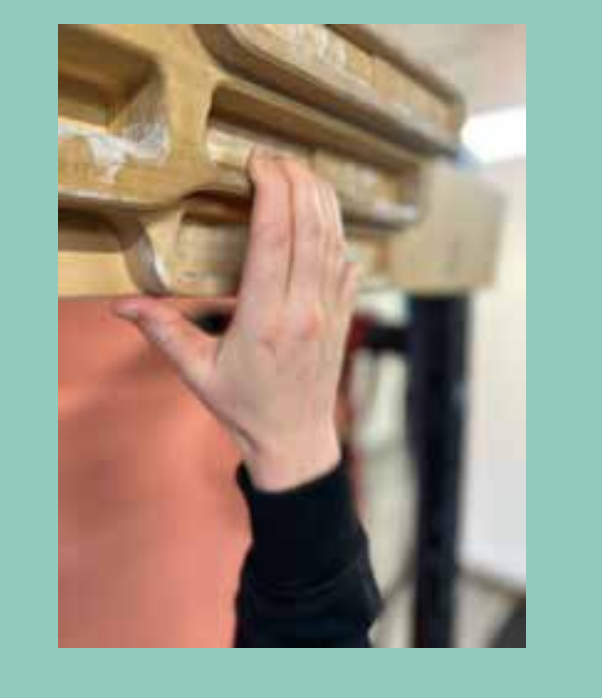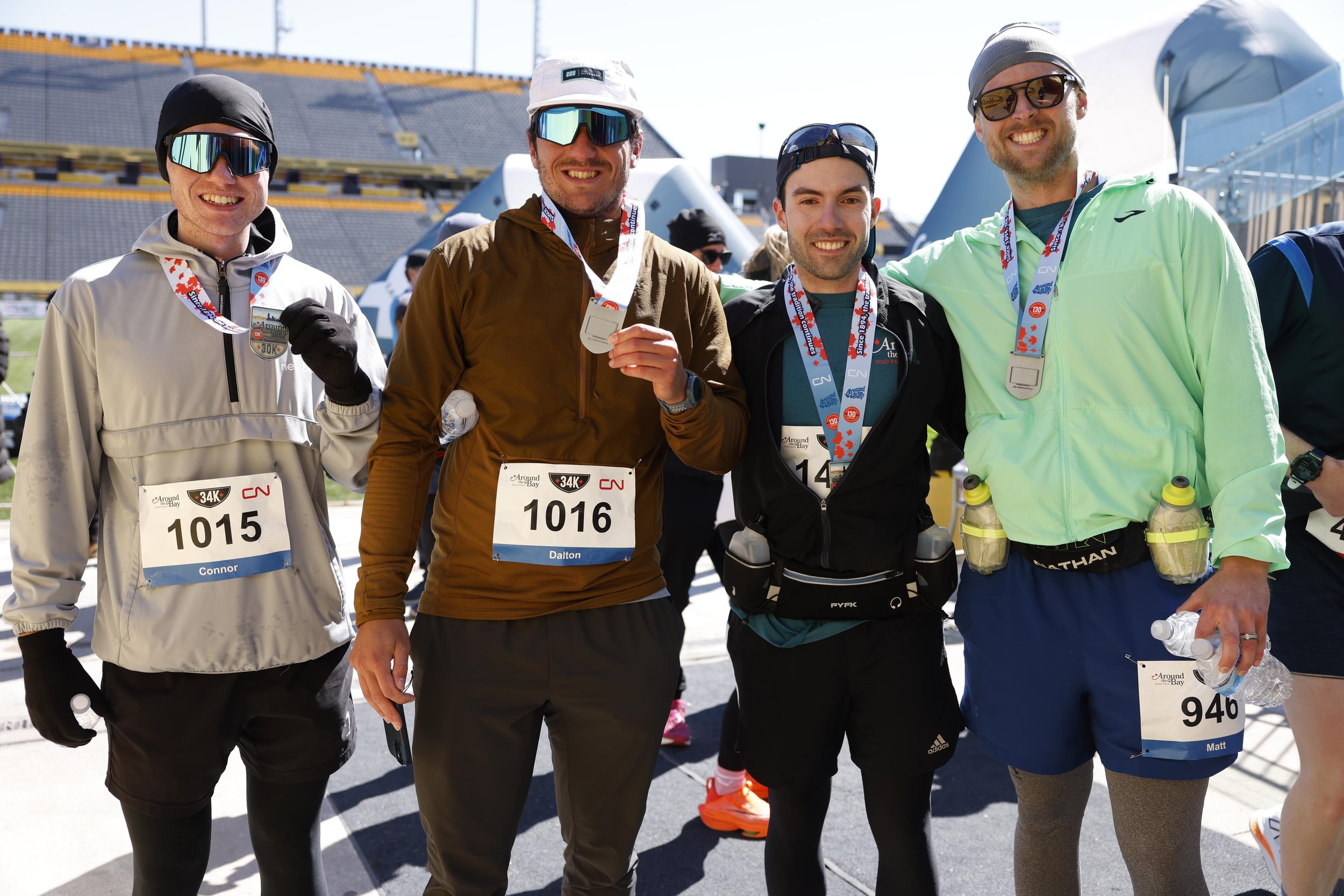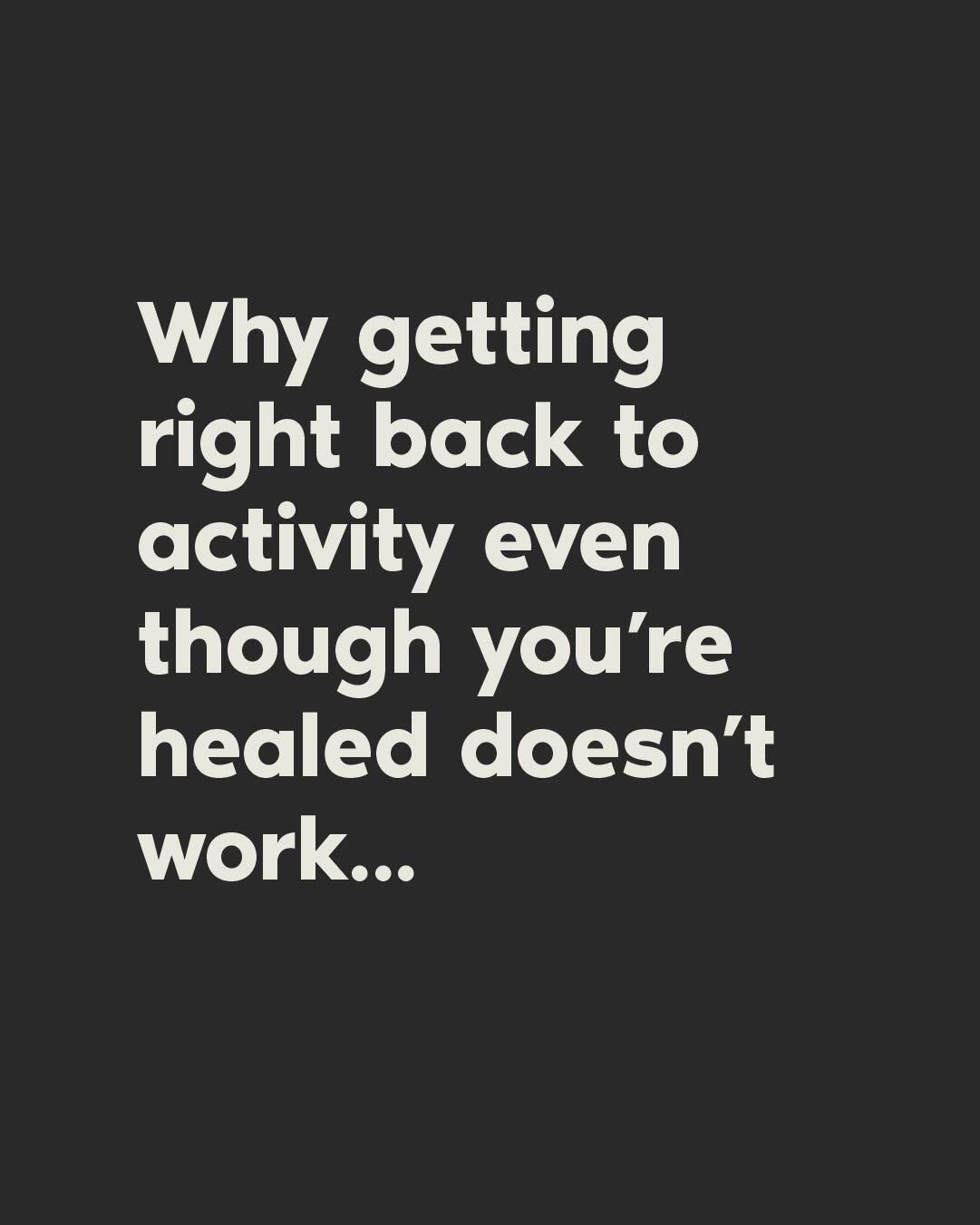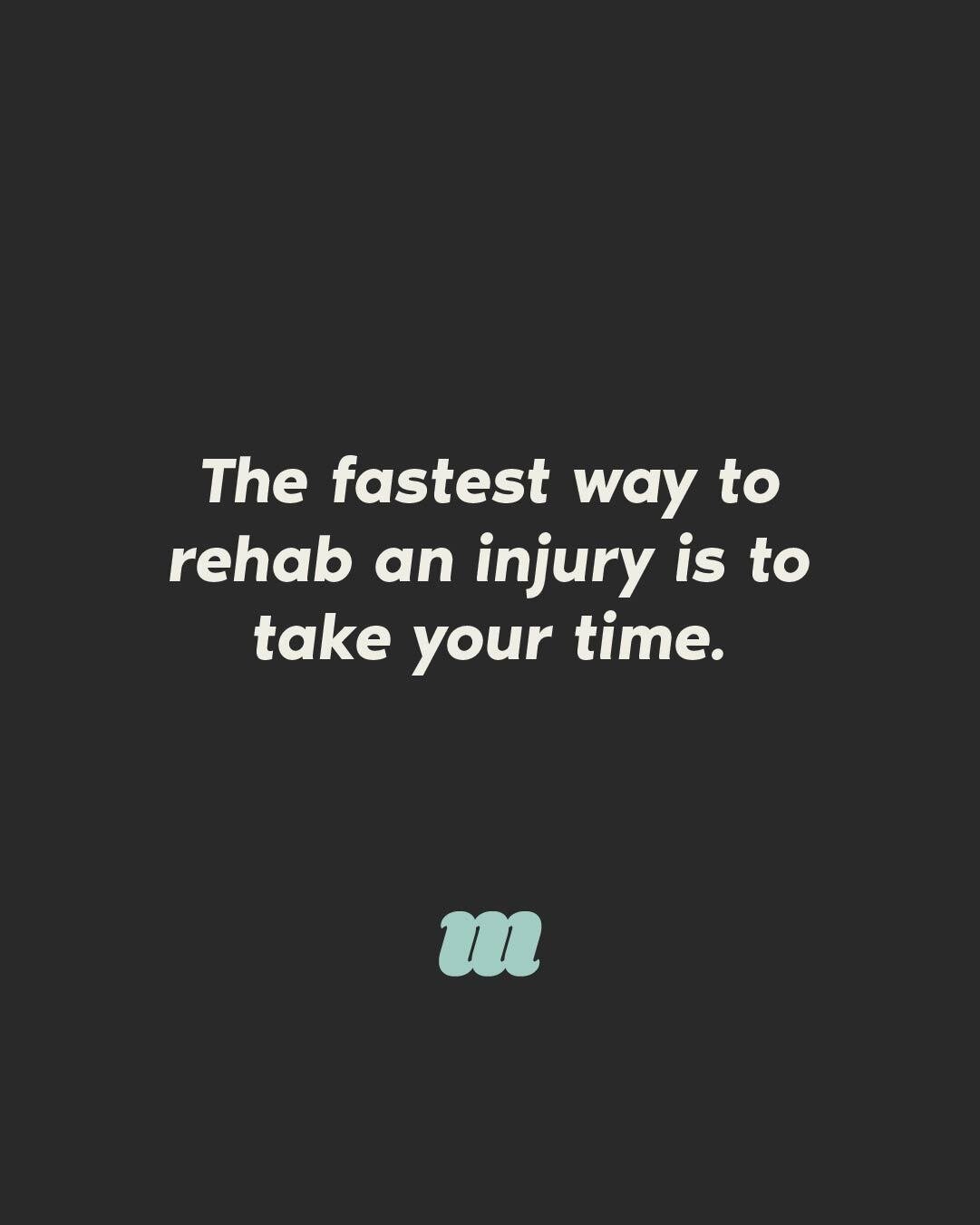
Howling Wolf 2025: Kicking Off the STAC Trail Series with Community and Grit
The first race of the STAC Trail Series — the Howling Wolf — is officially in the books, and what a day it was! The Movement Physio & Performance was thrilled to support the event by running one of the aid stations, bringing both energy and fuel to the trails as runners tackled the challenging course through Rattlesnake Point Conservation Area.

Injury as a Catalyst: Why It's Time to Rethink Physiotherapy
Injury is often viewed as a setback—but what if it could actually be the perfect catalyst for taking control of your health?
This idea has been on my mind a lot lately, especially as I reflect on patterns I see in our clinic and conversations I have with clients. Over the years, I’ve realized that injuries don’t just bring people into rehab—they offer a powerful opportunity to create lasting change.

Low Back Pain Myths, Truths, and How-Tos: A Physiotherapist's Guide
Low back pain is one of the most common and frustrating ailments, and it's something that almost everyone will experience at some point in their lives. However, many misconceptions and myths surround low back pain, which can make it more difficult to effectively manage. In this blog, we’ll dive into some of the most common myths, the truths behind them, and offer practical steps on how to manage and overcome low back pain.

Embodying a Healthy Lifestyle - Around The Bay 2025
The day after a big race, or Medal Monday as all the runners like to call it, is one of the best days! The sense of accomplishment you feel from doing something physically challenging far outweighs the slow shuffle you use to get up and down the stairs the day after a race. At The Movement, we have a list of standards we hold ourselves to, and today, I wanted to share one of them with you: Embody a Healthy Lifestyle.

Tendon Injuries: Understand the Cause, Take Control of your injury
Tendon injuries are frustrating. Whether you're a weekend warrior, an elite athlete, or just someone trying to stay active, tendon pain can feel like a major setback. But here’s the truth: tendon injuries aren’t a life sentence. With the right approach, you can rehab, rebuild, and come back stronger than ever.

Dealing With Injury: My Honest Experience and 3 Steps to Move Forward
If you’ve ever been sidelined by an injury, you know—it’s tough. Physically, mentally, emotionally. And no matter how much you know about rehab (or how many people you’ve helped through it), when it’s your body, it hits differently.
I’m a physiotherapist and coach, and for years I’ve helped people navigate the ups and downs of injury recovery. But lately, I’ve been living it myself. And it’s been harder than I expected. So I wanted to share a bit of my journey—what I’ve learned, what I’ve struggled with, and the three things that are helping me stay on track.

The Ultimate Fueling Guide for Around the Bay 30K
If you’re gearing up for Around the Bay 30K, you’ve probably been logging your runs, maybe adding some hills, and planning your taper. But there’s one thing that can take your performance to the next level—and it has nothing to do with running.
It’s fuelling.
Seriously. If you want to run stronger, feel better, and recover faster, dialling in your nutrition before, during, and after your runs is hands down one of the biggest game-changers. And the best part? You can start seeing results without adding more miles to your training.

Sports Physiotherapy: Elevating Your Performance
Sports physiotherapy is a specialized area focused on preventing, diagnosing, and treating sports-related injuries. It's all about enhancing your performance and ensuring you can participate safely in your chosen activities. Sports physiotherapists have a deep understanding of how different sports impact the body, allowing them to create personalized treatment plans just for you.

Mastering Finger Training for Climbers
Finger strength is a hot topic among climbers, and for good reason. At our clinic, we work with many climbers, and hang boarding is often their go-to method for finger training, especially when preparing for a bouldering or lead climbing trip. While hang boarding has its place, there are more specific techniques that can be even more effective. In this blog, we’ll break down three key methods for finger training: recruitment pulls, wall endurance sets, and feet-on campus boarding.

Our First Arc’teryx Climb Academy in Squamish as Ibex Project
Back in September we officially launched as Ibex Project so this was the first Arc’teryx Climb Academy that Don and Jess attended under that umbrella. It was great to get the name out there and see all of the athletes, some for the first time face-to-face.
Squamish, BC was home to this year’s Arc’teryx Climb Academy from August 23-25 and we were honored to be included, hanging, assessing, treating, and partying with all of these amazing mountain athletes. We met old friends and made new ones during three days of diverse, and well-organized events.
The town of Squamish was an amazing host and the team at Arc’teryx put together a fantastic three-day lineup including clinics, educational seminars, Pavilion Park programming, and the Academy Music Series where the athletes got to let loose and dance the night away, and dance we did!

The True Value of Physiotherapy: Beyond Pain Relief
Many people assume that the primary goal of physiotherapy is to reduce pain. However, the true value of physiotherapy goes far beyond that. At The Movement, we believe that effective physiotherapy is about meaningful change, resilience, and long-term improvement.

Low Back Pain For Runners
Over the last 4 years running rehab has been a big focus of our team at The Movement with almost all of our clinicians actively running on a daily basis. We have learned a thing or two about running and rehab.

Running Around The Bay In 2025? Consider these 3 things!
What’s up guys name is Dalton I am a physiotherapist and a runner who has helped many runners overcome injury and run strong. I have also been on a mission to qualify for the Boston marathon and have dedicated much of my own training to that over the last 4 years. Last year I ran the 34k around the bay for the first time and I had a blast. That is why today I am here to tell you that if you are a local runner who is looking to take on the 30k around the bay this year I have 3 things you are going to want to consider to make it the best time.

These 3 Steps Will Change How You View Rehab Forever
I’ve been in this profession for 7 years and the amount of information that comes at us on a daily basis about how to manage injuries is overwhelming. Even for me, someone who spends most of his time reading, listening, and consuming information to best serve the hundreds of clients I see each year.
That’s why I’m here to simplify and provide you with a framework that’ll change how you view your injuries forever. Remember, simple doesn’t mean easy. But let’s dive In.

3 Mistakes People Make When Rehabbing Tendons
If you’re reading this you’ve probably dealt with a nagging tendon injury before. These injuries can be annoying and feel like they are never going to go away. Over the years as a physiotherapist I’ve seen plenty of people who come through our doors with tendon injuries and most of the time they’re making 1-3 of the mistakes I’m about to cover. The good news is I’ll also provide you with a few takeaways on how you can get started on treating tendons the right way.

Avoid This Injury Rehab Trap
Many people mistakingly quit rehab too early. Most of the time when people do this, they either don’t feel pain anymore or they see that their injury is ‘healed’ on imaging. It should go without saying that these two scenarios in and of themselves are fantastic outcomes. However, this is normally not the best place to stop working with your rehab professional. Far too often, we see people that stop at this point flare things back up when they get back to their activity. Or they keep having the problem recur every so often. We’ll explain why this happens and what you can be working on to avoid this cycle and unnecessary prolonging of your injury and sitting on the sidelines.

The Biggest Injury Recovery Hack
I’m going to try to put myself in your shoes. You’re doing what you love….maybe this is tennis, running, climbing, powerlifting, or some other awesome thing. This activity is everything for you, your mental well-being, and your motivation to continue to get after it! Who knows, maybe this activity even anchors the rest of your lifestyle…and without it your nutrition, sleep, and overall habits go down the drain too. But as long as you have the ability to do these things then you’re good!
Until you get injured…

Elevate Your Climbing Game: The Importance of Training Your Legs
Rock climbing is often seen as an upper body-centric sport, with climbers focusing heavily on strengthening their arms, shoulders, and core. However, neglecting your lower body could be holding you back from reaching your full potential on the wall.
Here are three common misconceptions about leg training in climbing and why it's crucial to overcome them:

Running and Strength Training go Together Like Peanut Butter and Jam!
We GET you.
You’re a runner, not a bodybuilder.
You love the stress relief and way your body and mind feel during and after a great run. The freedom that comes with the simplicity of lacing up your shoes and that’s all you need to get a good workout in. The satisfaction of seeing your run times improve and new distances unlocked.

Your MRI is Not Your Story
MRI’s Are Amazing!
Don’t get us wrong, MRI’s help us identify serious problems and can be life saving when used to diagnose and guide surgical interventions. For example, MRI’s help us with…
Neurological Disorders: MRI is highly effective in imaging the brain and spinal cord, making it invaluable for diagnosing conditions such as brain tumours, multiple sclerosis, strokes, and various neurological disorders.
